By Marc D. Bernstein
December 7, 1950 dawned bitter cold in the remote mountains of North Korea. More than 14,000 U.N. troops trapped on the plateau at Koto-ri had already endured 10 days of frozen hell. On November 26, the entire Chinese Communist 9th Army Group had slammed into two overexposed regiments of the U.S. lst Marine Division, a U.S. Army Regimental Combat Team, and assorted other units strung out for miles along a narrow mountain road in the vicinity of the iced-over Chosin Reservoir.
American Route To Safety Impeded By A Gap In The Bridge
East of the reservoir, the overwhelming weight of Chinese had already smashed the U.S. Army’s 31st Regiment, forcing the survivors into a pell-mell dash for the comparative safety of the Marine positions along a twisting and dangerous highway that the Marines called the Main Supply Route (MSR), which snaked from the port city of Hungnam on the Sea of Japan into the mountain wastes of far northern Korea. The Chinese then besieged the Marines.
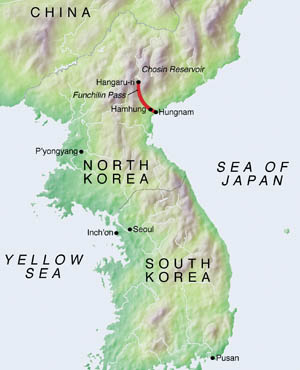
Now, after 10 interminable days of battling waves of Chinese and the worst weather imaginable, the lst Marine Division was on the verge of completing its breakout. But a blown-out bridge over the treacherous mountain gorge at Funchilin Pass threatened to halt its fighting withdrawal from North Korea. A 29-foot gap in the concrete bridge meant that the Marines would have to abandon all of their vehicles, and carrying out their wounded and dead under fire would be a nearly impossible task.
The gap would have to be bridged, but the Marines did not have bridging equipment at Koto-ri. So they made an emergency request to the engineers at Koto via the U.S. Air Force for a parachute drop of treadway bridge sections. No one knew whether it would work; it had never been done in the history of warfare.
A Daring Supply Mission To Drop Bridge Sections
At 9 am, December 7, eight big Air Force C-119 Flying Boxcars appeared over Koto-ri. Each plane carried one bridge section, weighing close to 2,500 pounds. The Marines needed only four sections, but had requested eight in case several did not survive the drop. The planes lowered to eight hundred feet, drawing fire from the Chinese on the surrounding hills, and the cargo masters began dumping their precious cargo. Each bridge section had giant G-5 parachutes attached to both ends for security if a single chute failed. A practice drop with smaller chutes at Yonpo airfield near Hungnam had failed, but there was no time for more experimentation. It was now or never for the 1st Marine Division.
After the shock of the Chinese attack in late November, it had become clear that the U.N. position in North Korea was untenable. Earlier that year, after North Korean forces had invaded South Korea and forced the U.N. troops into an enclave around the southeastern city of Pusan, U.N. commander Douglas MacArthur had executed a brilliant flanking movement with an amphibious landing at Seoul’s port, Inchon.
The North Korean Army largely disintegrated in the face of that reversal and fled north toward the Chinese border, the U.N. troops in hot pursuit. But Mao Zedong and the Chinese Communists viewed the pending American-led occupation of all of Korea as an unacceptable threat to their own interests and decided to enter the war.
Chinese Troops Force Marines Back To The 38th Parallel
Now, on the western half of the peninsula, the U.S. Eighth Army was retreating toward the 38th Parallel. In the east, the X Corps, of which the lst Marine Division was a part, found itself in a dangerous predicament. The unexpected weight of the Chinese troops, who had secretly infiltrated across the Yalu River during the preceding months, meant that the only military opportunity for the U.N. troops in this sector was a fighting withdrawal to the coast, followed by a sea and air evacuation from Hungnam.
The Chinese 9th Army Group was given the job of annihilating the lst Marine Division. It did not seem so daunting. The Marines and attached units strung out along the highway totaled around 20,000 men when the Chinese struck. The nine Chinese divisions ranging against them had an advantage in numbers of six to one.
But the Marines had a few elements in their favor. They were better equipped and supplied than the Chinese, and they had control of the air above the battlefield.
Ill-Advised Orders To Move Headlong Into The Mountains
In October 1950, the division had gone ashore at Wonsan and been ordered by the X Corps commander, Lt. Gen. Edward Almond, to advance up the narrow road from Hungnam deep into the mountains. The aim was to reach the Yalu’s border with China. Major General Oliver P. Smith, commanding the 1st Marine Division, believed that Almond’s instructions for the division to move hastily up to the Chosin Reservoir were ill-advised. As an experienced combat officer, Smith could smell trouble even if corps headquarters and general headquarters in Tokyo didn’t recognize the signs.
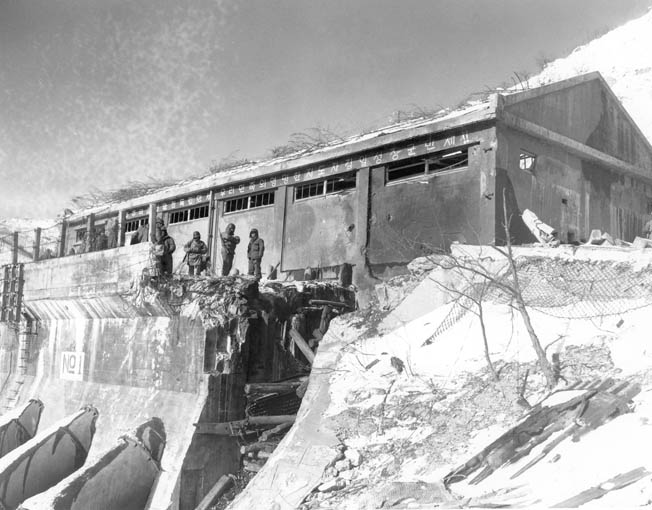
For example, there had been ominous contact with smaller Chinese “volunteers” on both the Eighth Army and X Corps fronts since October. These fronts were separated by a gap of 75 miles in the northern mountains, into which the Chinese had successfully infiltrated.
With the trap sprung in late November, Smith’s division found itself in a terrible tactical position. The lst, 5th, and 7th Marine Regiments were scattered along the highway. Only because Smith had defied Almond’s unwise orders by urging caution on his regimental commanders instead of advancing headlong into the mountains, did the division succeed in absorbing the Chinese onslaught while remaining intact as a fighting unit. Nevertheless, with nearly 1,500 vehicles and only a single road to move along, the Marines were subjected to continuous attack along the route of withdrawal, from Yudam-ni to Hagaru-ri to Koto-ri.
The Bridge Becomes the Only Option For Retreat
By now, the end of the first week of December, the bulk of the division plus a hodgepodge of other U.N. troops were assembled at Koto-ri preparing for the final stage of the breakout. Smith expected the 10-mile stretch between Koto-ri and Chinhung-ni to be the toughest yet: a downhill march through a sheer-cliffed ravine with the Chinese occupying the hilltops along the route.
The situation was further complicated by the fact that the Chinese had just blown the critical bridge at Funchilin Pass for the third time, presenting Smith with a searing problem. He described it thus: “At this point water coming from the Chosin Reservoir by tunnel emerged from the side of the mountain and was discharged into four penstocks [large concrete pipes] which descended steeply down the mountainside to the turbine of the power plant in the valley below. Where the penstocks crossed the road there was a concrete substation, without a floor, on the uphill side of the road covering the penstocks. On the downhill side of the substation was a one-way concrete bridge. The drop down the mountain side here was sheer. There was no possibility of a bypass. The integrity of this bridge was vital to us, for without it we would have been unable to get out our vehicles, tanks, and guns.”
Chinese And Brutal Cold Make Things Difficult
The bridge had been blown on December 1 and again on December 4, and repaired each time by U.S. combat engineers. But now the damage was more extensive, and the 14,000 troops at Koto-ri needed outside assistance. Just to reach Koto, most of these men had fought a 10-day running battle with the Chinese, but the battle against the elements had proved even worse. It was not officially winter yet, but the inhospitable mountains of North Korea, whipped by fierce Siberian winds, made the conditions of World War II’s Battle of the Bulge look moderate in comparison. At times, the wind chill along the highway reached 90 below zero. The raw Fahrenheit temperature was almost always well below zero.
Due to the prodigious efforts of Marine and Army engineers, airstrips had been hacked out of the frozen terrain, and the very worst frostbite and battle-casualty cases were evacuated by air. But many Marines with cases of frostbite so bad that their feet were turning black refused to submit to medical attention and continued to walk southward along the MSR in a state of mental and physical numbness. Only the vehicle drivers and the wounded who could not walk rode in jeeps or trucks. Everyone else marched.
It was 78 miles from what had been the most forward Marine concentration at Yudam-ni to the sea. The entire world watched spellbound as the lst Marine Division tried to extricate itself from the Chinese stranglehold. Few members of the press thought they could do it. Only the Marines themselves, and those with them, never doubted the outcome.
An Offer To Fly The Entire Division Out Refused
Nevertheless, the situation was so bad that on December 5, before the bulk of the lst Marine Division had pushed through to Koto-ri, Maj. Gen. William Tunner of the U.S. Air Force’s Combat Cargo Command had flown into the rough airstrip at Hagaru-ri and offered to fly out the entire division from that location. But that would have meant that the embattled troops could only have taken out their small arms. It would have also presented an increasingly difficult tactical situation as more and more troops were lifted out and the Chinese stepped up the pressure on those who remained.
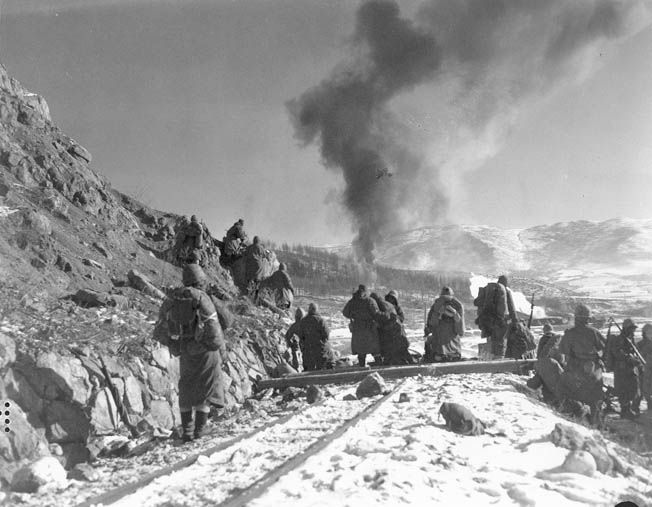
Nothing doing, said Smith. The lst Marine Division had come up to Chosin Reservoir as an intact fighting unit, and by God, it was going to leave as one. The fact that more than a hundred thousand Chinese thought differently simply did not matter. While flying out some of their wounded, the Marines were also bringing fresh replacements into Hagaru-ri.
Smith’s plan was straightforward enough. Now that he had all of his men at Koto-ri, he would send individual battalions south along the high ground on each side of the road with the aim of driving the Chinese from key hill positions. These infantry units would be supported by artillery units also leapfrogging southward. Most of Colonel Lewis “Chesty” Puller’s lst Marine Regiment would maintain the perimeter at Koto-ri until all of the other formations had moved out, performing rearguard duty.
Cover Was Vitally Needed For The Combat Engineers
Meanwhile, Lt. Col. Donald Schmuck’s lst Battalion of Puller’s Regiment, in position at Chinhung-ni, 10 miles south of Koto-ri, would drive north and seize the high ground dominating Funchilin Pass. Of particular significance was Hill 1081, the most important terrain feature between Koto-ri and Chinhung-ni, and which stood about a mile south of the key bridge through the pass. Hill 1081 needed to be taken, or the combat engineers would be exposed to withering fire from the heights above while they attempted to reconstruct the bridge.
Air support for the entire series of operations would remain critical; without it the men on the ground would be on their own, vastly outnumbered in a bad tactical situation. The 1st Marine Air Wing endeavored to keep 24 attack aircraft over the withdrawing column at all times during daylight in order to provide immediately available fire support. At night, specially equipped fighter aircraft could offer some degree of coverage.
In addition to the Marine Air Wing, Navy aircraft flying from carriers in the Sea of Japan and Air Force planes from other parts of Korea tried both to keep the troops on the ground supplied and the Chinese under constant pressure. But the weather often did not cooperate, and the Air Force was simultaneously engaged in massive support of the Eighth Army’s crumbling front in western Korea.
Condoms Dropped Instead Of Rations
Because of these airmen, the troops on the ground retreating from Chosin Reservoir were well supplied with ammunition. Food was a different matter, however. The C-rations and K-rations carried by the troops were frozen solid and could not be readily thawed. Lighting fires along the route of march presented the obvious problem of drawing enemy fire, especially at night. As the breakout progressed from Yudam-ni to Hagaru-ri to Koto-ri, the men were continually drained of energy. In a moment of complete comic relief, at Koto an airdrop delivered boxes of condoms to the Marines, who quipped, “What do they think we are doing with those Chinese, anyway?”
The Chinese were having a very hard time of it themselves. Their positions in the hills were subject to air attacks, which took a devastating toll over the two-week period. Despite their continuous harassment of the Marine column, they had been unable to prevent the movement from the reservoir to Koto-ri and were absorbing terrible casualties every time they concentrated and launched an attack. They were also subject to piecemeal destruction as small groups launched seemingly uncoordinated attacks about every three hundred yards along the Marines’ line of march. Attempts to infiltrate into the column itself were continually made and beaten back.
Frozen Chinese Surrender Without A Struggle
Of course, the cold was devastating to the Chinese as well as the Americans. They were unprepared for the most extreme weather and their logistical support was sparse. Consequently, many Chinese units were captured intact by the Marines because they were physically incapable of moving and their weapons had frozen up. Some Chinese surrendered with their hands frozen to their rifles; Marines had to break the prisoners’ fingers simply to dislodge the weapons from their hands. On the attack south from Koto, a Marine unit found Chinese in foxholes surrendering in such frozen condition that the Marines merely lifted them out of their holes and placed them on the road to thaw out.
The problem of the bridge itself was unique. Fortunately, with the Marines at Koto was a U.S. Army engineer unit that possessed two bridge-laying six-ton Brockway transporter trucks. Although no bridging materials accompanied the trucks, without them it would have been extremely difficult to move the airdropped bridge sections from Koto to the blown-out bridge site, and to mount the sections once they were at the bridge.
A Plan To Patch The Bridge Approved
When the bridge was knocked out for a third time, blocking movement south of Koto, Lt. Col. John Partridge, commanding the lst Marine Engineer Battalion and in charge of all engineer units at Koto, flew reconnaissance over the bridge site to assess what would be needed. He figured on four treadway sections, and that the gap to be spanned was 19 feet.
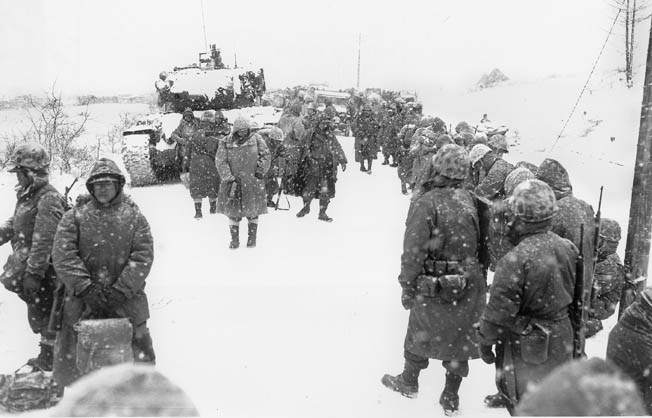
Smith approved the plan, and Partridge asked for a practice drop at Yonpo to see if the bridge sections could survive the landing. The Air Force unit at Yonpo used regular G-1 chutes, and the test failed. But there was no time for further practice; the next drop would be for real. Partridge asked that eight bridge sections be dropped at Koto, to allow for error.
When the sections were shoved out of C-119s on the morning of December 7, six were recovered in good shape. The Marines found a seventh damaged but still usable. The eighth section landed in Chinese-held territory. The Air Force intentionally dropped the sections just outside the Marine perimeter at Koto in order to avoid hitting Allied soldiers. By late afternoon of December 7, all necessary equipment for the bridging operation was assembled at Koto and the Marines were ready to move into Funchilin Pass.
A Whiteout Confronts The Marines
Under cover of darkness in the early morning of December 8, Lt. Col. Schmuck’s battalion began a six-mile march north from its positions at Chinhung-ni toward the objective of Hill 1081. A few hours later, the Marines at Koto began their drive south toward the blown-out bridge. The weather that morning was particularly abominable—heavy, blinding snow and a temperature of 14 degrees below zero. Visibility was 50 feet. There was no air cover in what amounted to a whiteout.
Schmuck’s battalion used the conditions to advantage as it crept up on the Chinese defending Hill 1081, but the going was agonizingly slow: It took six hours to move the six miles and make contact with the Chinese.
Captain Robert Barrow, commanding A Company, lst Marines and charged with capturing the summit of Hill 1081, later remarked that the Chinese 60th Division was “clearly in a position to control, dominate and absolutely stop the lst Marine Division from moving south. They had to be dislodged.” Barrow’s men scaled an ice-encrusted cliff in the howling wind. But they surprised the Chinese on the summit, with Corporal Joseph Leeds spearheading an assault on the key bunker atop the hill after he and his men had crawled up to the enemy position on hands and knees.
Marines Fall Behind Schedule Due To Weather And Exhaustion
All told, the Marines assaulting Hill 1081 suffered 13 dead (including Leeds, who received a posthumous Navy Cross), and 17 wounded in the process. But they drove off the Chinese and held the position against a determined enemy counterattack on the night of December 8, during which the temperature reached 25 below zero.
Meanwhile, the advance southward from Koto-ri proved slower than expected. Some of the Marine units ordered to lead the assault were so severely depleted by frostbite and combat casualties that they lacked sufficient strength to mount a coordinated attack. This was particularly true of the 3rd Battalion, 7th Marines, whose three rifle companies comprised a total of only 130 combat electives—combined. Colonel Homer Litzenberg, commanding the 7th Marine Regiment, ordered his 2nd Battalion to assist the 3rd in clearing enemy positions west of the road. Given the weather, this required considerable time and could not be completed before dark on December 8.
The Brockway trucks carrying the bridge sections had been moved forward to within range of the bridge site, but then were pulled back toward Koto when it appeared that the engineers would be unable to undertake the bridging operation that day. Partridge could not risk having the trucks unnecessarily exposed to enemy artillery or mortar fire. Another effort would be made the following morning.
The Bridge Gap Was Wider Than Expected
First Lieutenant David Peppin of D Company, lst Engineer Battalion, was given the job of laying the new bridge across the gap. With the weather more favorable early on December 9, the two Brockway trucks again groaned down the road toward the site. Peppin then noticed a pile of timbers near the knocked-out bridge; Japanese had placed these here years before when Korea was a vassalage of Japan. When Peppin measured the gap in the bridge, it proved too wide to be covered by the M-2 treadway sections themselves. This was an unanticipated problem stemming from additional damage the Chinese had somehow accomplished since Partridge overflew the gap several days earlier.
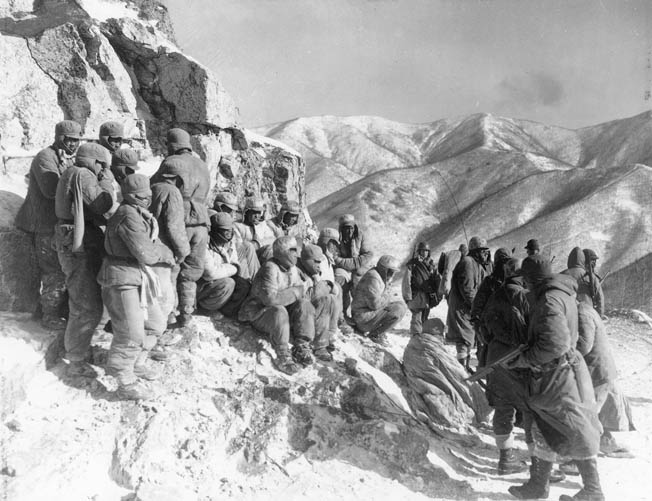
But Peppin (on the recommendation of a platoon sergeant) made the most of his situation by using the stacked timbers to build up a crib on a small shelf just below the roadway. The M-2 sections could be laid from the crib across the rest of the gap, thereby restoring the bridge. Peppin used Chinese prisoners to move the timbers to the bridge site, where the engineers built the crib and laid the new sections.
Colonel Litzenberg allowed Peppin two more hours to complete the job. By 3:30 pm, the new sections were hooked together and the treadways spaced so that tanks could cross. Trucks and jeeps would need to make use of plywood center sections that had been dropped to the engineers along with the heavy treadway sections.
A Bulldozer (With Assistance From Ice)
Peppin had yet another job. The Chinese had also dynamited a steel railway bridge onto the highway about a thousand yards south of the now-repaired bridge at the penstocks. The railway bridge had crossed above the road but now lay demolished and at right angles across it.
Following an infantry battalion across the treadway bridge, Peppin moved with a bulldozer to the new obstacle. Suddenly a mortar barrage erupted. But from this, Peppin and the bulldozer driver emerged unhurt, and Peppin decided to see whether the bulldozer could just push the big steel bridge out of the way. The ice on the road proved helpful as the bulldozer shoved the bridge off the road. The route to Chinhung-ni was open!
But disaster soon struck. Although the treadways of the newly repaired bridge over the gap could handle a weight of 50 tons, the four-inch-thick plywood center sections would support only 20 tons. This was more than adequate for most purposes, but a tractor towing earth-moving equipment broke through the plywood and hung precariously on the edge of the precipice. This effectively blocked further movement across the bridge. But Marine Technical Sergeant Wilfred H. Prosser, an expert tractor driver, saved the day by climbing onto the tractor and carefully backing the vehicle off the bridge.
Quick Thinking Allows Tanks And Jeeps To Pass
Now the engineers had a new problem: Without the plywood center section, tanks could still cross on the metal treadways, but the narrower wheelbases of the trucks and jeeps would prevent further movement of those vehicles. Thinking quickly, Partridge ordered the steel treadway sections pushed as far apart as possible, which would allow the tanks to cross while jeeps could ride on the treadways by carefully aligning their wheels so that they cleared the inside lips of the metal sections by a mere half-inch on either side.
There was no margin for error, and a crossing procedure originally undertaken at two miles an hour was slowed even more. As the vehicles in single file crossed the treadway bridge, each driver had to concentrate to the utmost. An inadvertent lapse would have meant plunging 1,500 feet down the side of the mountain. N. Harry Smith, a war correspondent, later said, “I didn’t want to ride in any vehicle over this hellish road, down a mountain that never leveled off into flatness.”
Crossing More Hazardous Under Darkness
The troops at the repaired bridge were still under long-range sniper fire, and as darkness descended the operation became extremely hazardous. The engineers guided the drivers across only by flashlight, because headlights would have attracted enemy mortars.
Nevertheless, the column snaked southward from Koto-ri the whole night. Partridge recalled: “The sensation throughout that night was extremely eerie. There seemed to be a glow over everything. There was no illumination and yet you seemed to see quite well; there was artillery fire, and the sound of many artillery pieces being discharged; there was the crunching of the many feet and many vehicles on the crisp snow. There were many North Korean refugees on one side of the column and Marines walking on the other side. Every once in a while, there would be a baby wailing. There were cattle on the road. Everything added to the general sensation of relief, or expected relief, and was about as eerie as anything I’ve ever experienced in my life.”
By 2:45 am on December 10, the first Marine units reached the comparative safety of Chinhung-ni, still 43 miles from Hungnam, but out of the deadly Chosin trap. They boarded trucks and were driven to Hungnam. But most of the remainder had to continue trudging toward the coast until more transport became available.
“Chesty” Puller Brings Up The Rear With Dead And Wounded Marines
In mid-afternoon, Koto-ri was abandoned by the Marines. The rear of the column consisted of tanks covered by men of the lst Marine Division’s Reconnaissance Company (the recon men were there because of a mix-up in orders). Following by a few hundred yards was a large group of Korean refugees. Chesty Puller was among the last to leave Koto. He walked out; his jeep carried a handful of dead and wounded Marines.
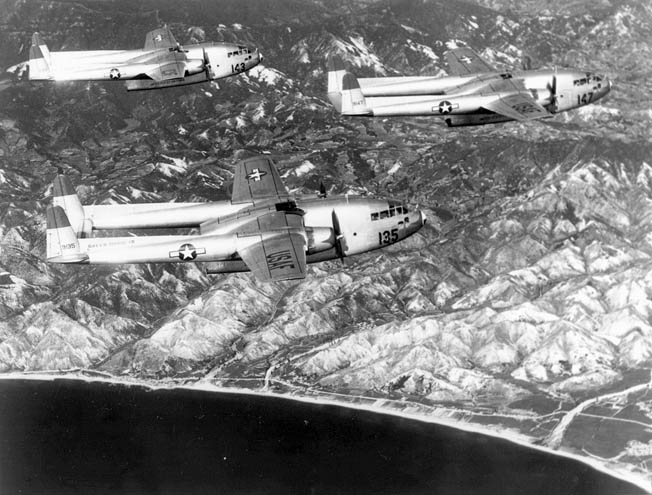
The Marine column, stretching along the mountainside for 10 miles, was organized so that each section of the supply train was separated from the next by a quarter-mile. Each vehicle driver separated himself from the next by 50 yards. Although the spacing meant vulnerability to infiltration by small bands of Chinese, it also ensured that a complete section of the supply train would not be wiped out in the event of a sudden ambush or by accurate enemy fire. Above both sides of the road, Marine rifle companies moving along the ridges provided protection for the vehicles negotiating the pass.
Some Chinese Shot Rather Than Taken Prisoner
Between Koto-ri and Chinhung-ni, the Marines captured more than a hundred Chinese prisoners, some of whom were so frostbitten that gangrene had already set in. But the Marine rifle companies in the hills could not afford to take prisoners. Strained to the limits of human endurance, bone-tired and pressed for time, some small units that captured prisoners defied the orders from higher headquarters to bring their captives down the mountain, and simply shot them as an exigency of war (from an eyewitness account cited in The Korean War: An Oral History, by Donald Knox).
A last sharp firefight erupted south of Chinhung-ni in the middle of the night of December 10. But the Marine column pushed through the Chinese roadblock and continued toward Hungnam. Partridge ordered the treadway bridge in Funchilin Pass demolished on the afternoon of December 11. He recalled: “I had a sense of well-being after everyone had crossed over and I’d blown the bridge.”
During the final push south from Koto-ri to Chinhung-ni and beyond, the lst Marine Division and its attached units suffered 75 killed, 16 missing, and 256 wounded. On reaching Hungnam, the division was evacuated with the rest of the U.N. forces in northeastern Korea. The Chinese were too battered to continue the fight all the way to the sea. As a last act, U.S. demolition teams destroyed the port of Hungnam to deny the Communists its use. There would be no return.
”Battle Unparalleled In U.S. Military Histroy”
The dramatic breakout of the lst Marine Division from Chosin Reservoir was widely reported at the time by the world press. Time magazine remarked that it “was a battle unparalleled in U.S. military history,” possessing “some aspects of Bataan, some of Anzio, some of Dunkirk, some of Valley Forge, some of the ‘Retreat of the 10,000’ (401-400 bc) as described in Xenophon’s Anabasis.” In fact, most of the world didn’t think the Marines stood a chance until they had actually cleared Funchilin Pass.
But the Chinese 9th Army Group may have lost as much as half its numerical strength to battle casualties and the severe cold. It was knocked out of the war for over three months at a very critical time. The lst Marine Division suffered nearly seven thousand casualties in two weeks of almost constant fighting, although about half were owing to frostbite and illness. The X Corps absorbed over 2,700 additional casualties, mostly in the U.S. Army units operating alongside the Marines.
As a Marine later wrote, “We gave up the ground, but we may well have saved the war.” The troops themselves knew they would make it. If ordered back north, they would have gone.
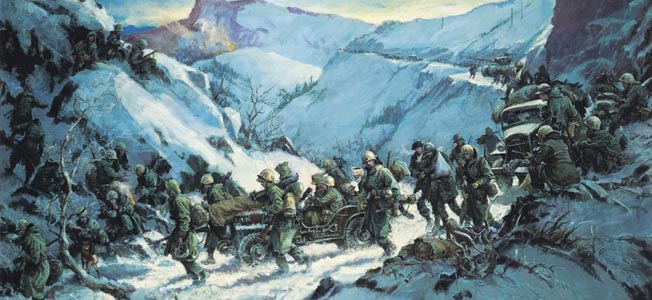
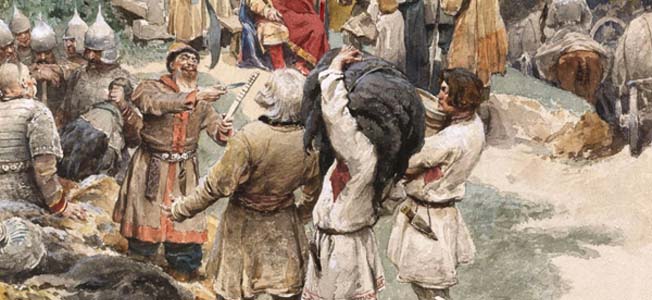
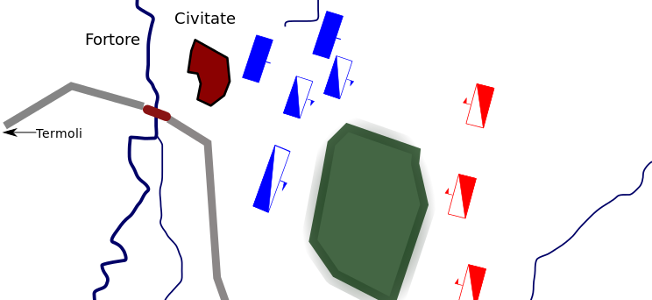
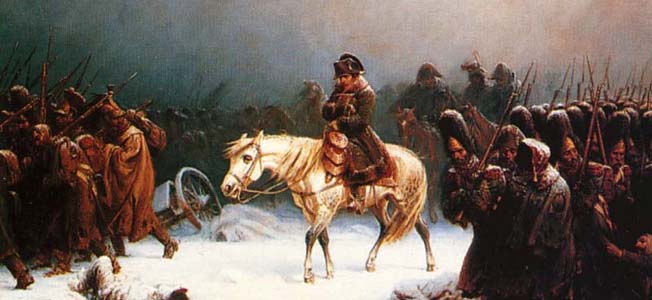
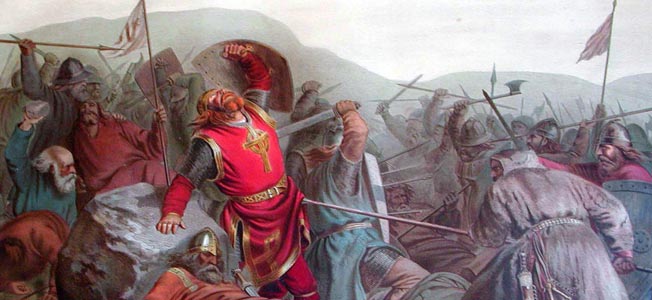
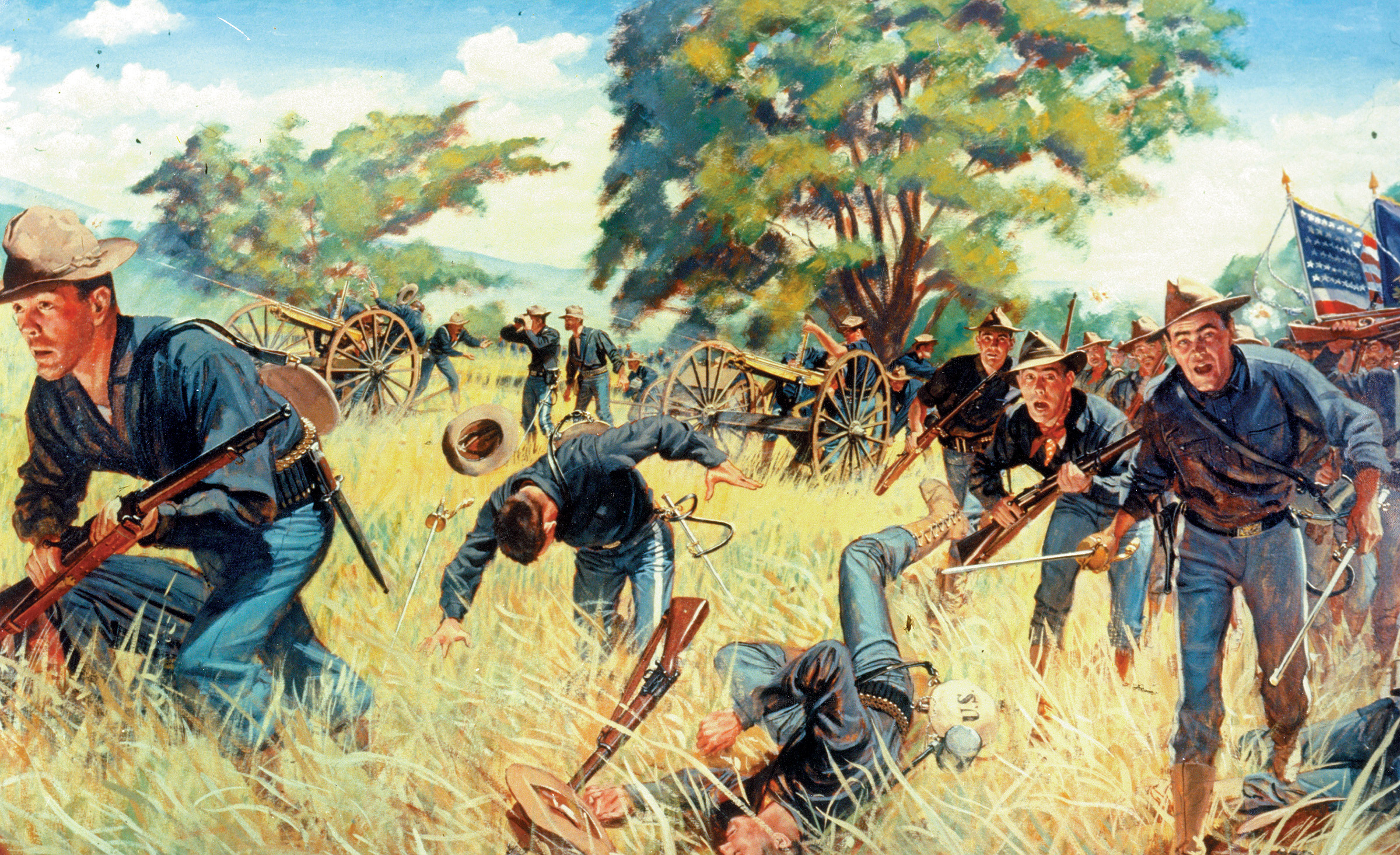
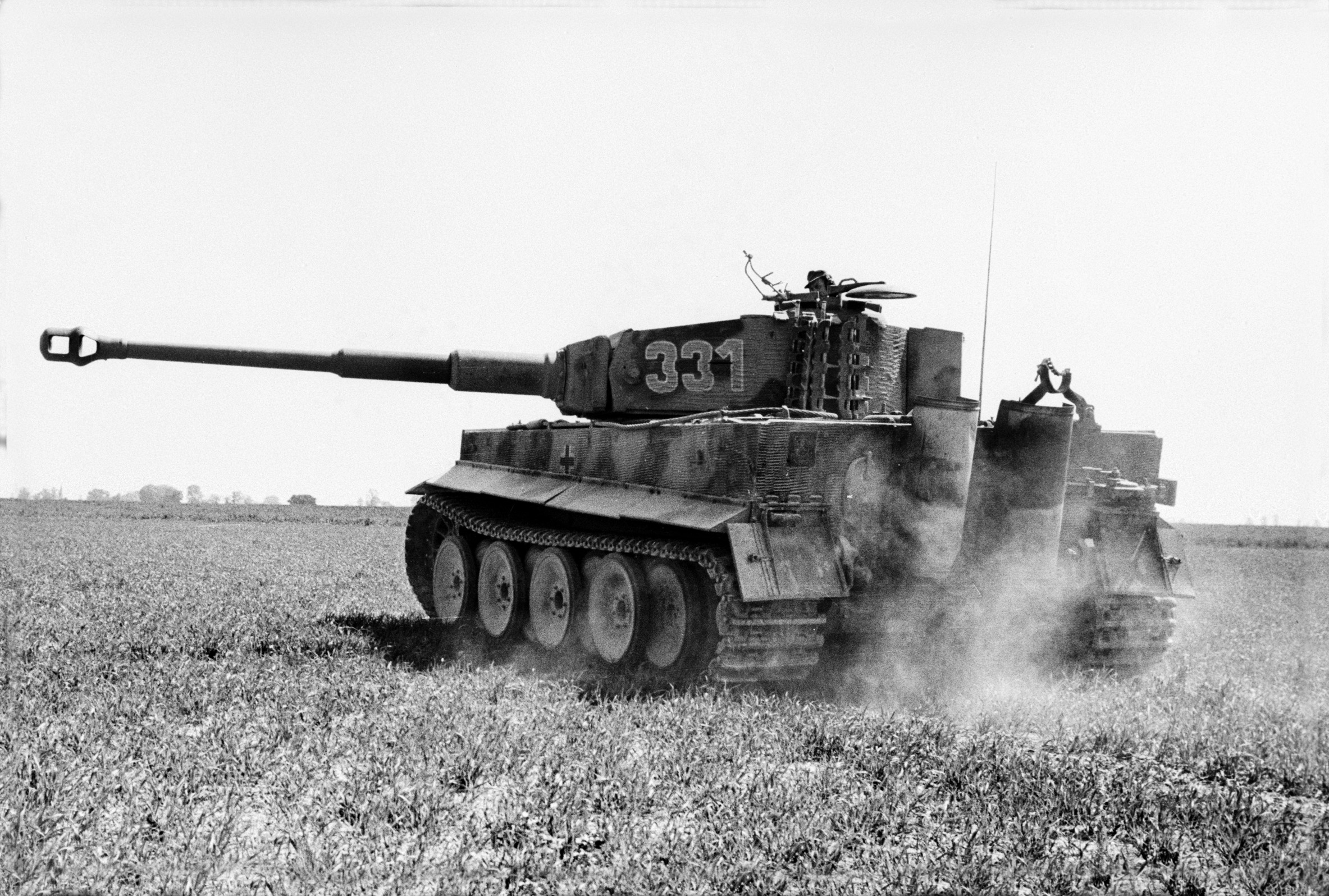
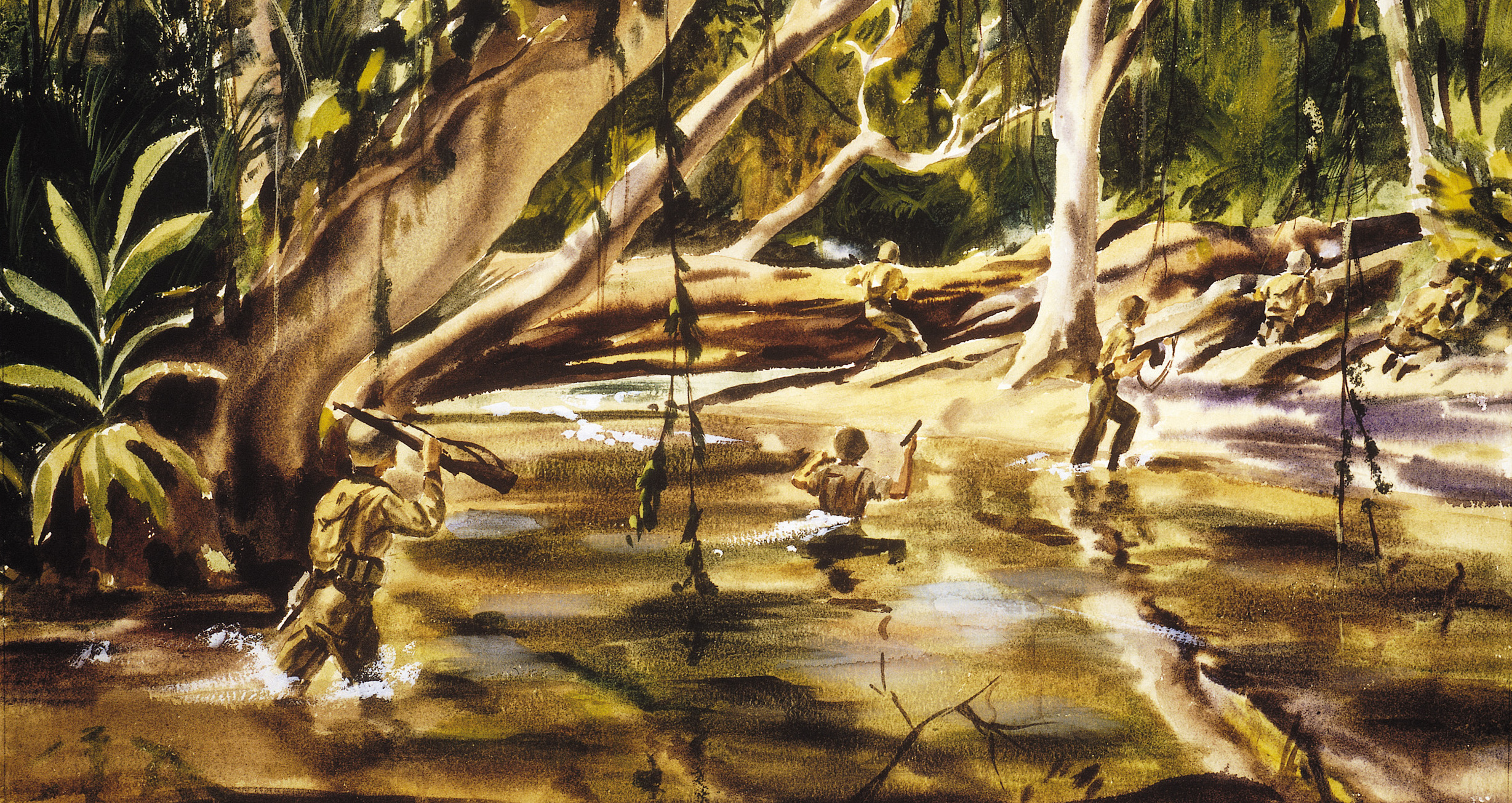
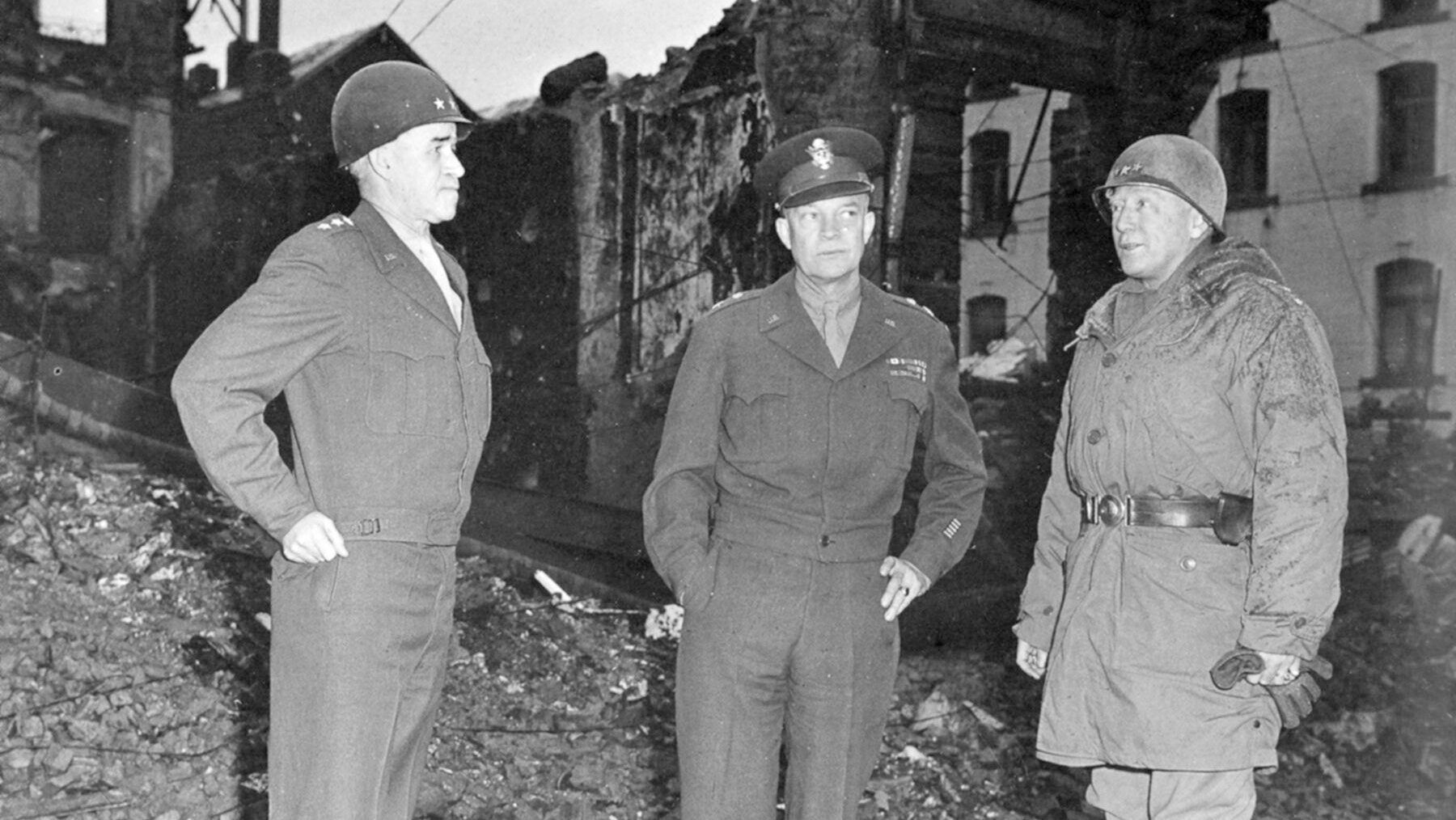
I read “On Desperate Ground”,by Hampton Sides…the book is beyond riveting. The Marines were surrounded at the Chosin reservoir,outnumbered 10-1 and fought brilliantly when the odds were stacked against them. Gen. Douglass MacArthurs bravado and false sense of mission endangered these soldiers.Gen.Ned Almond got it all wrong. He thought it would be a cake walk. He was deadly wrong. I’m so impressed by the gallantry and fighting spirit of The 1st Marines ,X Corps a group of Royal Marines aka The 41 Independent Commandos and several US Army Units as well as UN Troops. These guys were surrounded,outnumbered with temperatures at times plummeting to 75 below zero.
Frostbite ruled as did the wounded and dead. The Marines kicked the Chinese and Korean troops butts back to Siam and some…very impressive. They sustained losses but, they might have been erased if not for their valor, sense of mission and care for one another.
Thank You for this historic summary.
My request for help.
My father was at the Chosin Reservoir. He received a Silver Star, Bronze Star and two Purple Hearts. My family and I have requested his military records through the proper channels and forms but have been unsuccessful. I’m writing this with the hope that someone would read this and send me a note to point me in the right direction to help my family obtain his military records. My father didn’t talk much about the battles he was in or why he received these decorations. As a kid I asked my father why he got the metal plate in his head? He said “I didn’t run fast enough”.
Douglascapri@gmail.com
Semper Fi
My father, Lt. Col. Royal S. Thompson, commanded the squadron that dropped the bridge sections. His squadron volunteered for the assignment. He piloted one of the Flying Box Cars. I saw my father in a PBS documentary about the Battle of Chosin Reservoir. He never talked about this nor told war stories at all. My sister, Sandra Carroll, discovered quite a lot of information about my father one Veteran’s Day a couple years ago. He also commanded a squadron of C-47s that participated in the D-Day operation. I’m very proud of him. He was well respected by his men.
A friend of mine thinks his father might have been one of the pilots that dropped the bridge pieces. I’d appreciate any information I can get especially a list of the crews that flew that mission. Thanks in advance.